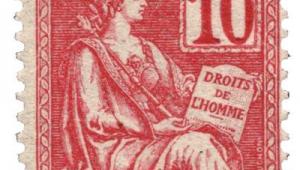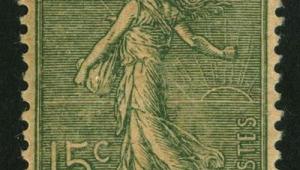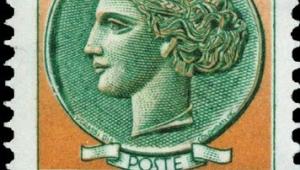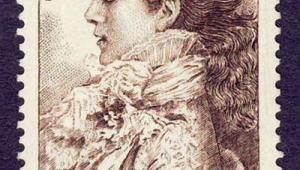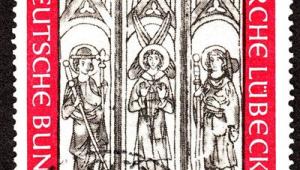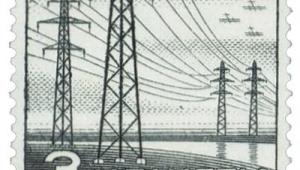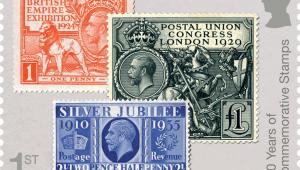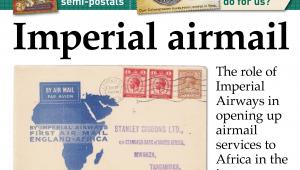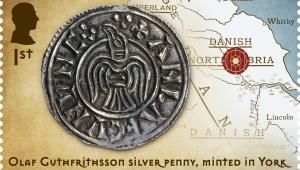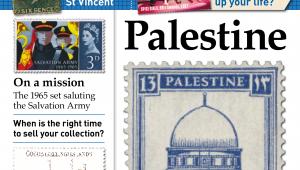Denmark: Permanent wave
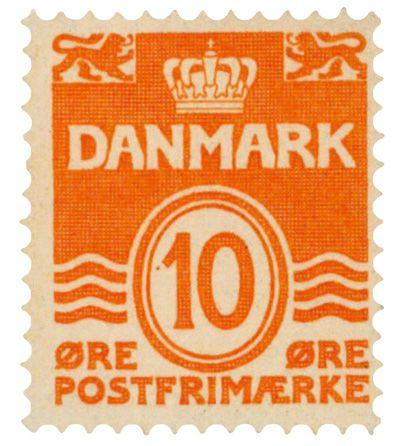
There aren’t too many countries that can boast definitive sets that have run for over a century, but Denmark can. Its ‘Wavy Lines’ series was first issued in 1905, and is still going strong today!
The design, by Julius Terchilsen, includes symbols from the Danish Coat of Arms, along with three waves intended to represent the three straits that connect the North Sea and the Baltic Sea: the Storebælt (Great Belt), Lillebælt (Little Belt) and Øresund.
There are three essential groups of these iconic stamps to collect.
From 1905 to 1933, the stamps were printed in typography by H H Thiele, which had printed all Danish stamps up to then. They are distingished from later issues by having nine hearts incorporated in the design.
The first printings, ranging from 1 øre to 12 øre in value, were on paper with a Crown watermark, but later ones had a watermark of Multiple Crosses. The change of paper came with a change in perforation.
Interesting additions to the series come in the form of booklet stamps, several surcharges (starting in 1921) and especially tête-bêche pairs. Most of the latter were marketed to collectors by the postal authority, but the first one, of the 5-øre green, was never officially on sale and is rare.
Another diverting variety from this period is the use of bisected stamps on the Faroe Islands (a Danish territory which did not have its own stamps until 1975), when stocks were running low.
In 1933, the postal authority decided to start printing its own stamps, and to produce all ‘Wavy Line’ definitives in recess.
Among the various teething problems was ink absorption, which had to be overcome by omitting the hearts. Another difference was that a second ring was added around the numeral of value.
The first cylinders (type I) wore out rapidly, so a new mother die (type II) was produced, which lasted longer. Most values of the first period can be found in both types, but one has a unique production history.
The first printing of the 10ø was in violet, from the type I cylinder, but it was rejected and a new cylinder was made for this value alone. The first issued copies are therefore of type Ia, in orange.
The value was later printed as type II, but for one print run the old type I cylinder was used. This variety of the 10ø is now the most sought-after of all the ‘Wavy Lines’, and the rarest recess-printed stamp of Denmark.
In 1937, 10ø brown received a commemorative overprint to mark the 50th anniversary stamp exhibition of the KPK (Copenhagen Philatelic Club).
There are also varieties in paper to collect, with fluorescent paper having been introduced in 1962.
In 2005, to mark the centenary of the ‘Wavy Lines’, a new die was produced, for values from 25ø to 450ø.
This harked back to the original design, with the hearts included once again and the second ring around the value disappearing.
The new stamps are readily distinguishable from their early predecessors, as they remain recess-printed.
